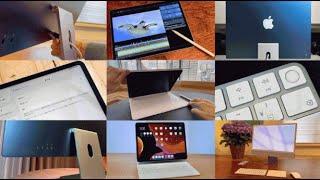"Portable Wi-Fi" Review
25/03/2022

The new MacBook Pro announced last week was a surprise with a notch (notch at the top of the screen) like the iPhone in recent years. While some social media users have criticized the move, Apple employees say the notch provided a "smart way" to give users more space.
This is said by Mac product line manager Shruti Haldea, who also appeared at last week's "Full Power" event. In an interview on the "Same Brain" podcast, Shruti Haldea said the notch is a "smart" solution for the Mac, taking the macOS menu bar out of the way and providing more space for content. increase.
The change in the new MacBook Pro was to "make the display taller," Haldea said. For example, the old 16-inch MacBook Pro had an aspect ratio of 16:10, but the display was enlarged from there and the menu bar was 'moved up so as not to get in the way.' "It's a really smart way to make room for your content," he says, "but in fullscreen mode, it's a 16:10 window and it looks great."
Taking the 16-inch model as an example, the resolution of the old model is 3072x1920, while the new model is 3456x2234. Of these, 74 pixels are subtracted from the vertical direction of the new model, resulting in 3456 x 2160, and the aspect ratio is maintained at 16:10, which was also pointed out in the data discovered from the macOS Monterey beta version. That means you can relegate the macOS menus to the upper notch, leaving the main screen below full use.

Compared to previous MacBook Pro designs, the new 14-inch and 16-inch have significantly reduced bezels. According to Apple, the left and right bezels of the display are 24% thinner than the previous generation, just 3.5mm. And on the notched top, the bezel is 60% thinner, at 3.5mm.
Although the notch is noticeable at first, it is also reported in official marketing materials that Apple is taking care to hide it. In dark mode, it blends into the black of the screen, and when the macOS app is in full screen mode, the system adds a black border at the top of the screen to hide the notch and interfere with the content the user is displaying. It is the condition that it should not be done. App developers can also reportedly choose to display content on either side of the notch.
The iPhone's notch, which was first introduced in 2017, isn't universally loved, and rumors abound that Apple is working hard to get rid of it. In fact, it was emphasized that the notch of the iPhone 13 series was about 20% smaller, and it was expected that the iPhone 14 Pro (provisional) model would be made even smaller by punching holes.
The notch on the iPhone is close to ``a flaw that continues to remain as we approach a full-screen design,'' whereas on the MacBook Pro, ``Thin bezels are used while the macOS menu is kept out of the way of Kintetsu. It is positioned as "place", and the meaning should be different. However, if a notch is provided, it seems that there will be more than a few requests for Mac to have Face ID installed like the iPhone.
Source: Same Brain podcast
via: MacRumors